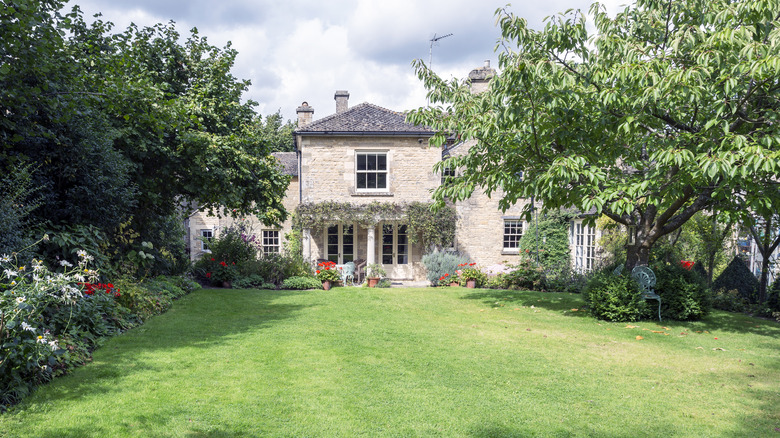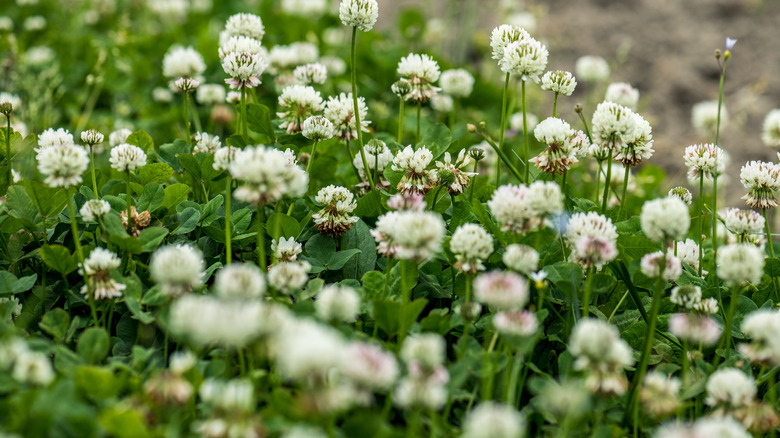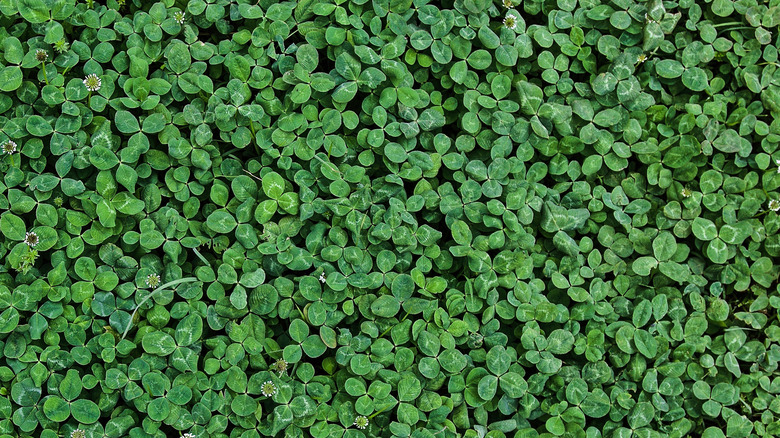White Clover Vs Microclover Lawn: Which Is Better?
While a pristine green lawn has long been an essential component of the American dream, the labor, money, and environmental impact of traditional turf grass understandably has people searching for other options. Clover is one of the best and most popular lawn alternatives, but the number of available clover varieties can be overwhelming. Two popular choices, white clover (Trifolium repens) and microclover (Trifolium repens var. 'Pirouette' and 'Pipolina'), come with significant advantages to turf grass but also have unique downsides, so the best option for you may depend on cost, how much time you have for mowing and reseeding, and whether or not you want your lawn to flower.
Whether or not you should plant a clover lawn is a personal choice, but the fact that clover is more drought tolerant than turf grass and requires little fertilization makes it an appealing option for many homeowners. Unlike grasses, clovers are nitrogen fixers, and thanks to a symbiotic relationship with a common bacteria, they can create their own useable nitrogen which improves the soil quality in your yard. Clover is also hardy in zones 3 through 10, making it a viable choice throughout much of North America. While these are advantages shared by many clover varieties, there are also some differences between traditional white clover and its microclover variant, with white clover generally being more aggressive, fast-growing, and likely to flower, as well as being significantly less expensive.
Advantages to a white clover lawn
White clover is what many people think of when they imagine clover. This aggressive and fast-growing plant can quickly form clumps and mats to quickly fill in a patchy spot on your lawn, which is an ideal purpose behind this kind of clover lawn. White clover seeds are generally inexpensive to buy, often costing only around 10 dollars for a pound, as opposed to microclover which can easily cost four times as much.
Traditional white clover generally grows to a height of about 8 inches but can be kept mowed to a lower height of around 4 inches if you prefer that appearance. Because it flowers profusely during summer, white clover turns your lawn into a great food source for bees and other pollinators, though this can also be a disadvantage if you enjoy walking on your lawn barefoot. Additionally, if you let the clover flowers go to seed, your clover lawn can take care of reseeding itself, creating less work for you.
Advantages of microclover
Microclover varieties like 'Pirouette' and 'Pipolina' are generally less aggressive and grow more slowly than traditional white clover. While this may mean you have to wait a bit longer for your lawn to fill in, it also means you're less likely to have to fight to keep the clover out of your flower beds. Microclover has also been found to mix better with turf grass, making it a better option for anyone looking to grow a mixed lawn.
While microclover generally has smaller leaves and a more diminutive size than regular clover, it needs to be regularly mowed to keep that look, otherwise it will resemble regular white clover. In some cases it has also been found to revert to regular white clover after a few years. Microclover is also less likely to flower, which can be an advantage or disadvantage depending on if you are allergic to clover flowers or to the bees that it often attracts. Microclover's lack of flowers also mean you are more likely to need to reseed it occasionally to keep your lawn thriving.


